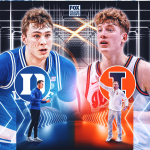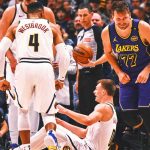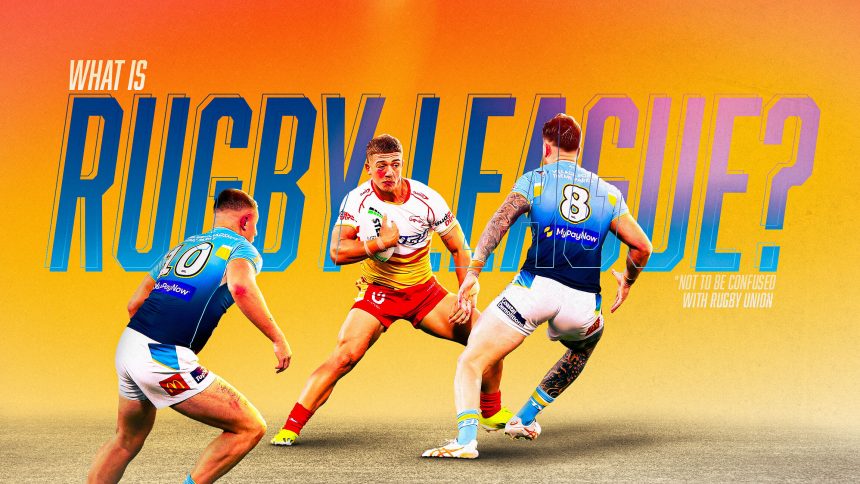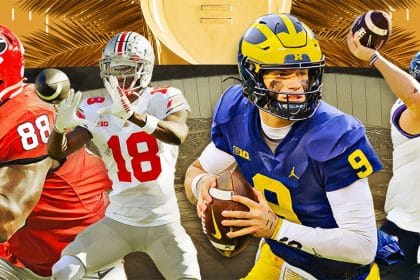The National Rugby League doubleheader Saturday night in Las Vegas on FS1:
As Australia’s National Rugby League prepares to bring its rugged brand of physicality to American soil this coming weekend, the biggest challenge it faces is the most obvious.
Namely, the task of educating Americans on the basic question: “What is rugby league?”
Let’s break it down. “Rugby league” is not, simply, a league that plays rugby. No, mate, rugby league is a distinct sport in its own right, markedly different from “rugby union,” the brand of rugby played at NCAA Division I level in college and in the United States’ Major League Rugby competition.
ADVERTISEMENT
In Australia, rugby league is the more popular form of the game and, according to retired superstar Wayne Pearce, has just as much in common with American football as it does with the “other” type of rugby.
“No other sport is more similar in its nature to the NFL,” said Pearce, who is still involved in the game as Australian rugby league commissioner, via telephone from Sydney. “The ferociousness of the play, the structure of the game, and the way teams try to move the ball — there is a lot in common.”
On Saturday, four of NRL’s biggest teams will kick off the new campaign with a double-header at Allegiant Stadium in Las Vegas, home of the NFL’s Las Vegas Raiders and host site for the Super Bowl three weeks ago.
The Manly Warringah Sea Eagles will square off with the South Sydney Rabbitohs (9:30 p.m. ET, FS1) before the Brisbane Broncos try to outduel the Sydney Roosters (11:30 p.m. ET, FS1). There’s a lot more on offer than just the cool team names.
If some of the above is revelatory information, there are plenty of other nuggets about rugby league that you might enjoy getting to know. Hollywood icon Russell Crowe, he of “Gladiator” fame, is co-owner of South Sydney and played his part in explaining the sport for American newbies with a snappy promo video.
“No helmets, no pads, no timeouts, no blocking, no forward passes,” Crowe said, before going on to tell how rugby league has 13 players per side (union has 15), that each team takes turns on offense and defense, like football, and has six “tackles” (similar to downs) before it either scores, kicks for distance, or turns possession over to the opposition.
“Just like in (the) NFL, there are defined periods of offense and defense,” Crowe continued. “Because of the speed of the game, it is all about strategy on the fly. One of the main objectives of rugby league is to keep the action going. If a minor infringement takes place, a signal will be heard and the tackle count starts again.”
Perhaps just as relevant for those who enjoy their athletic pursuits a certain kind of way, is the raw and unforgiving nature of the action, summed up neatly by Rabbitohs star Campbell Graham recently, when he told FOX Sports the plan for the group of teams coming to Vegas was to “get out here and bash each other.”
The NRL is comprised of 17 teams, dotted around Australia with one in New Zealand, but heavily concentrated in the region surrounding the nation’s largest city, Sydney, where the game has historically enjoyed its greatest popularity.
Each club plays 24 times across 27 weeks, with the top eight reaching the postseason, known as the Finals, where higher-positioned teams maintain home-field advantage if they keep winning and can receive a second chance in the case of a defeat.
In terms of what to expect from a viewing experience, imagine an NFL game where you can’t pass forwards and the men on the field are derived solely from the skill positions. And where the competitors play both offense and defense while seeking creative ways to break the line and score tries (the equivalent of touchdowns).
Elite all-round athleticism is prioritized. Forget about specialization, if you can’t handle the ball fluently, or can’t tackle, you’re essentially obsolete.
Stars such as Broncos fullback Reece Walsh and Penrith Panthers standout Nathan Cleary are like cyborgs constructed from the NFL’s most destructive players; think Patrick Mahomes‘ smarts, Christian McCaffrey‘s quickstep running, Justin Jefferson‘s sure hands, and, in the case of Cleary, even Justin Tucker‘s dead-eye kicking.
There has been an occasional crossover. Philadelphia Eagles offensive tackle Jordan Mailata played rugby league through his teenage years, but at 6-foot-8 and more than 300 pounds, he was almost too big to be effective professionally. In the mid-1970s, San Francisco 49ers special teams player of the year Manfred Moore spent a season in rugby league in Australia, becoming something of a cult figure.
Controversial NRL star Jarryd Hayne made the 49ers roster for the 2015 season but eventually returned to Australia after getting released, his remarkable physicality offset by mistakes, including a muffed punt reception in a nationally televised game.
For the potential new fan, rugby league is not an intrinsically complicated sport to get the hang of. The game flows rapidly and the force of the collisions can easily be heard and imagined through the television screen.
Bringing the first two matches of the season to the U.S. is part of an NRL bid to increase international awareness beyond the current strongholds of Australia, northern England and several small South Pacific nations.
“Rugby league is football, but maybe not as you know it,” Crowe said. “It’s arguably the fastest, most aggressive, ball-in-hand football game that exists.”
Expectations are realistic, with NRL chiefs hoping for a crowd in the region of 30,000, perhaps half of whom will be made up of a large contingent of opportunistic Aussies, capitalizing on their favorite sport’s overseas foray as a fine excuse for a few days sampling the unique perks of Sin City.
Because what happens in Vegas, stays in Vegas, this is no one-night fling, with a five-year agreement in place for similar regular-season journeys from Down Under.
As with all such enterprises, there is an element of fortune involved, but the NRL is betting on its uncompromising physicality and passionate intensity to serve as a fine form of introduction while helping to gain a small American foothold.
BEGINNER’S GUIDE
- Players per team: 13, with four rotating subs
- Duration: Two 40-minute halves
- Format: Each team has six “tackles” to advance the ball
- Scoring: Four points for a try (touchdown) plus two for a conversion (extra point). Two points for a penalty, one for a drop-kicked field goal, two for a drop kick from 40-plus meters.
- Reigning champions: Penrith Panthers
- Most successful team: South Sydney (21 titles)
- Biggest stars: Nathan Cleary (Grand Final MVP 2023), James Tedesco (Australia national team captain), Reece Walsh (social media sensation), Kalyn Ponga (regular season MVP 2023)
Martin Rogers is a columnist for FOX Sports and the author of the FOX Sports Insider newsletter. Follow him on Twitter @MRogersFOX and subscribe to the daily newsletter.
recommended
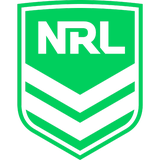
Get more from National Rugby League Premiership Follow your favorites to get information about games, news and more

